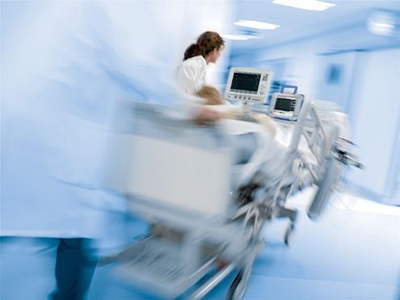
Source: pinoytransplant.com
“CODE BLUE. CODE BLUE. WARD 5 EAST.”
The same sentence repeats twice. Today was my second day in Intensive Care Unit (ICU) rotation and this was my first “Code Blue”. An inpatient “Code Blue” usually means that the patient has loss of consciousness and need life support immediately.
The ICU consultant, registrar, nurse and I left everything in the ward and rushed to the 5th floor to attend to the patient. My mind went blank at that time. I did not know what to expect. I already had tutorials and simulation on basic and advanced life support a few months ago, but that was training. This was real life situation. Ward 5 East is a Cardiothoracic ward, but the differentials and possible causes for collapse was popping up in my mind. I followed my consultant and the rest from behind. They seemed calm and prepared.
When we arrived, the room was already filled with healthcare personnel, from doctors to medical students and nursing students. Someone was doing a cardiopulmonary resuscitation (CPR) on the patient, another was managing the airway, and the other was scribing what was happening. It was chaotic for me as I have never seen anything like that before. The attending registrar explained the situation to us. I tried to listen to the discussion but the resuscitation scene caught my attention more. It is very different from the movie or simulation. I could feel the adrenaline rushed to my brain. I felt overwhelmed with this new experience until the only thing I caught from the patient handover was that they suspected a massive pulmonary embolus in the patient. It means that a blood clot from other parts of the body travelled to smaller blood vessels in the lungs and obstructed the blood flow causing difficulty in breathing, which consequently strains the heart causing cardiac arrest.
Since the attending registrar is new, he was relieved when my consultant took over the case. He took over the airway management and intubated the patient to secure the airway. Blood gases was done, shock was treated, adrenaline and other medications have been administered but there was still no sign of life. Few nurses and nursing students took turns to do the CPR. I was standing next to my consultant, still absorbing this first experience. My consultant looked at me and asks, “Have you done CPR?”
“I have practiced on a dummy before, but not on a real person,” I answered.
He then said, “Okay, hop on after her,” referring to the nursing student who is doing CPR.

Source: www.caehealthcare.com
I became flustered, attempting to recall the steps and how deep should I go. The code has been running about 35 minutes at that time. When the nursing student finished with her cycle, I quickly took over and tried to regain my composure. I tried to recall the feeling and rhythm that I had practiced on the dummy. The feeling was different. Human body is softer and is easier to push. It took a while to calibrate the strength and the pressure of the chest compression. While pressing on the chest, I noticed the pink but breathless face of the patient. He looked like he was sleeping. I continued doing the CPR while the doctors kept discussing with each other regarding the next step.
Not long after that, someone tapped me from behind and said, “You can stop now.” I stopped and looked at the patient’s face and saw his face turned from pink to white and then blue. Unfortunately, we were unable to resuscitate him. We thanked each other for the effort and left the room. The nurse in-charge will take over to prepare the body for the morgue.
I was still overwhelmed by my experience on my way back to ICU ward. Everything happened so fast and the cardiac arrest was unexpected. He had no risk factor for pulmonary emboli but when his death came, no one could stop it from happening. It made me realise that there are limitations to what we can do to a patient, but it should not be the reason for us not to try our best to save their lives. We gave our all and leave the rest to the Creator. Thank God for this experience and may he rest in peace.
That is the story of my first CPR on a real patient and my first death. I was glad that I experienced these when I was still a student. As a medical student, you know that you do not have all the capabilities required to help the patient. Most of the things that you can do, the doctors have already done. However, when you are the attending doctor, people will depend on you. Your decisions and experience will affect the patient’s well-being, if God willing. To medical students, try to grab as much experience that you can but do not forget to enjoy your student life as well. I believe this experience is priceless and useful, especially when I become the only doctor covering the ward at night, next year.
Dr Faiz Rashdi recently graduated as a medical doctor from University of Melbourne. He is currently awaiting his posting as a house officer in Malaysia.
